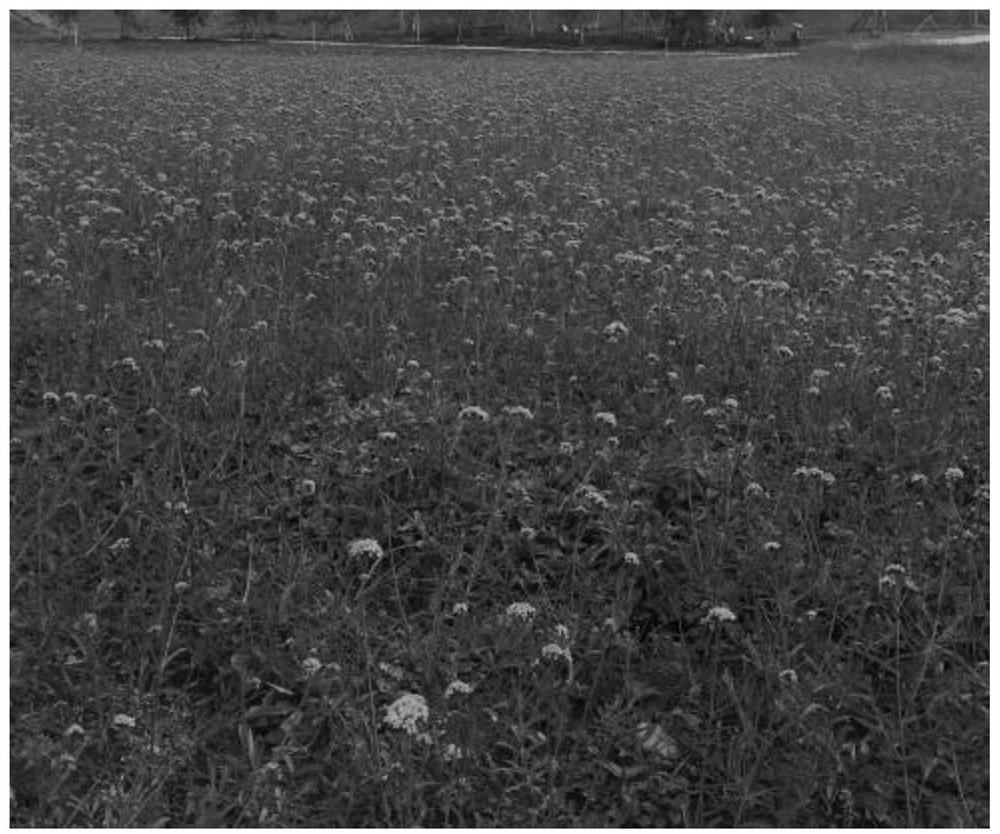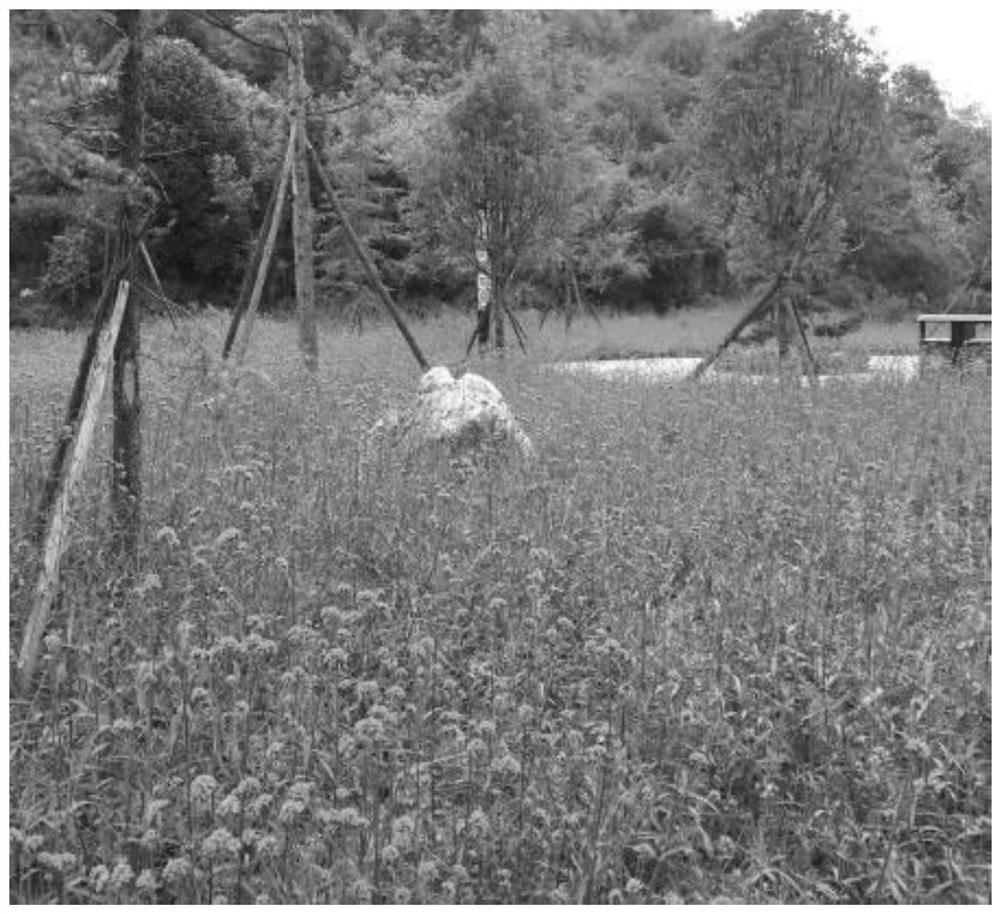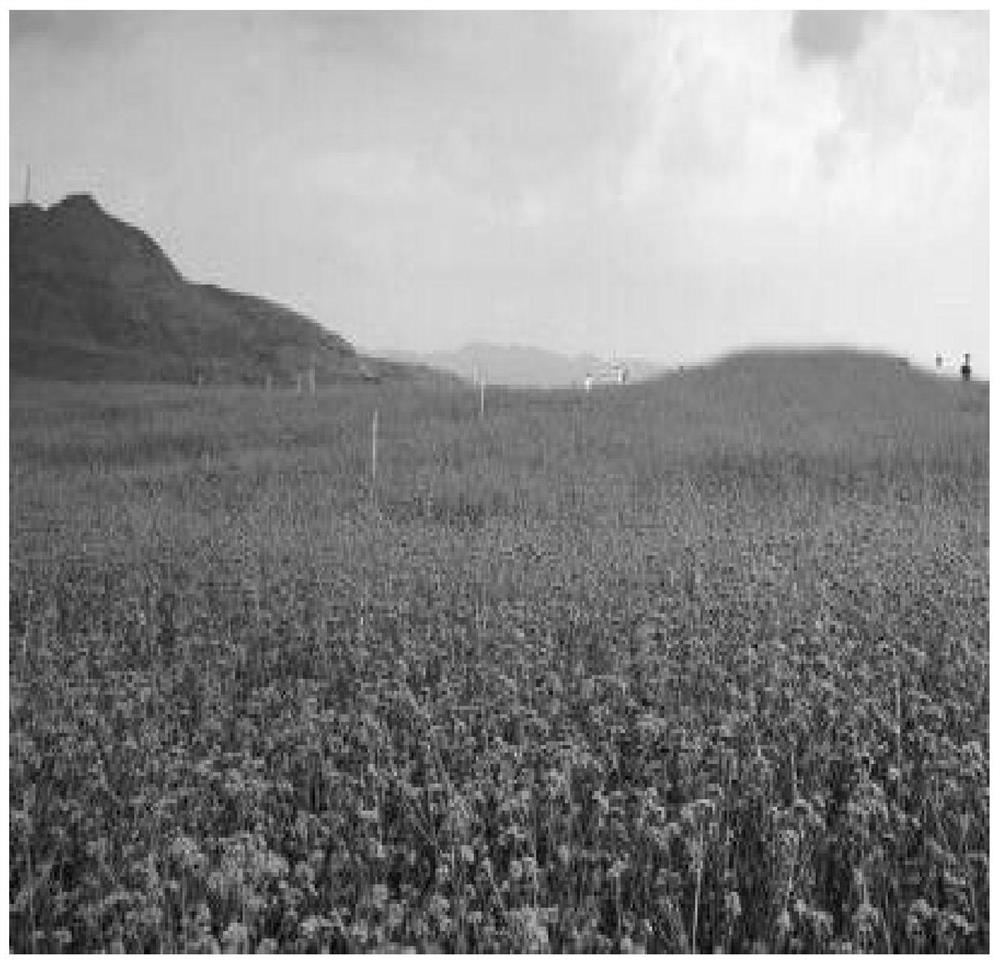A method for controlling the secondary flowering of Willow Verbena
A willow verbena, secondary flowering technology, applied in flower cultivation, agriculture, fertilization devices, etc., can solve the problems of few flowers, discount of ornamental value of verbena, poor ornamental effect, etc., to prolong flowering period and excellent ornamental effect , the effect of not easy to drop flowers and fruits
- Summary
- Abstract
- Description
- Claims
- Application Information
AI Technical Summary
Problems solved by technology
Method used
Image
Examples
Embodiment 1
[0027] The second flowering control method of willow leaf verbena of the present embodiment, the method is:
[0028] S1, water reduction: the soil water content is 16% before the Verbena seeds are formed, and the Verbena willow begins to form seeds in June, and the soil water content is reduced before the flowering quantity decreases, so that the soil water content is 14.5%;
[0029] S2, pruning: after reducing the amount of watering for 10d, the willow verbena plant is pruned, and all inflorescences are pruned, and the willow verbena plant height after pruning is 40cm;
[0030] S3, water and fertilizer management: water the willow verbena plants after pruning once every 3 days, and the amount of watering each time is 5L / m 2 ; Apply 5g / m2 after pruning 3d 2 urea, after pruning 15d, apply 21g / m 2 A phosphorus-potassium compound fertilizer, the phosphorus-potassium compound fertilizer is made up of the following raw materials in mass percentage: phosphorus pentoxide 51.7%, pot...
Embodiment 2
[0036] The second flowering control method of willow leaf verbena of the present embodiment, the method is:
[0037] S1, water reduction: the moisture content of the soil is 18.5% before the Verbena seeds are formed, and the Verbena willow begins to form seeds in June, and the moisture content of the soil is reduced before the flowering quantity decreases, so that the moisture content of the soil is 16%;
[0038] S2, pruning: after reducing the amount of watering for 10d, the willow verbena plant is pruned, and all inflorescences are pruned, and the willow verbena plant height after pruning is 50cm;
[0039] S3, water and fertilizer management: the pruned willow verbena plants are watered once every 3 days, and the amount of watering each time is 3L / m 2 ; Apply 50g / m2 after pruning for 3 days 2 urea, after pruning 15d, apply 21g / m 2 A phosphorus-potassium compound fertilizer, the phosphorus-potassium compound fertilizer is made up of the following raw materials in mass perce...
PUM
| Property | Measurement | Unit |
|---|---|---|
| concentration | aaaaa | aaaaa |
| concentration | aaaaa | aaaaa |
Abstract
Description
Claims
Application Information
 Login to View More
Login to View More - R&D
- Intellectual Property
- Life Sciences
- Materials
- Tech Scout
- Unparalleled Data Quality
- Higher Quality Content
- 60% Fewer Hallucinations
Browse by: Latest US Patents, China's latest patents, Technical Efficacy Thesaurus, Application Domain, Technology Topic, Popular Technical Reports.
© 2025 PatSnap. All rights reserved.Legal|Privacy policy|Modern Slavery Act Transparency Statement|Sitemap|About US| Contact US: help@patsnap.com



